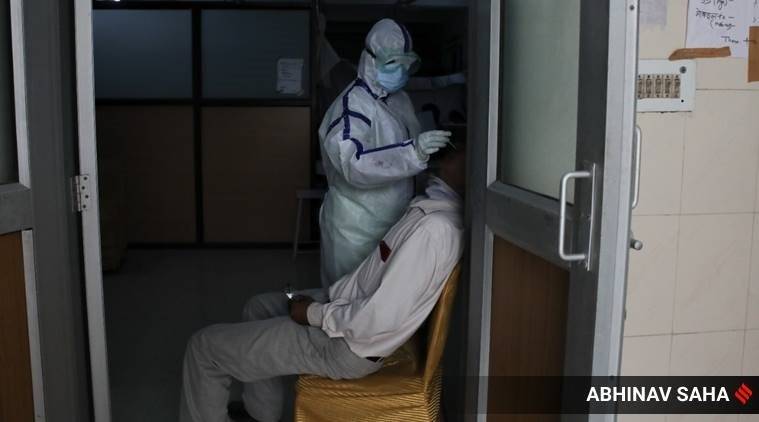 According to the study, at least 627 out of 640 districts, which is 98 per cent of the districts in India, have now been hit by the pandemic. (Express file photo by Abhinav Saha)
According to the study, at least 627 out of 640 districts, which is 98 per cent of the districts in India, have now been hit by the pandemic. (Express file photo by Abhinav Saha)
A STUDY published in The Lancet on Thursday indicates that Chandigarh and Panchkula are some of the least vulnerable regions in India when it comes to managing and adequately responding to the Covid-19 pandemic. The study, which was carried out by two Indian researchers — Rajib Acharya and Akash Porwal from the non-profit research organisation ‘Population Council’ — has tabulated a vulnerability index which ranks and identifies regions in India that are least equipped to battle the pandemic on the basis of certain paradigms and criteria.
According to the study, at least 627 out of 640 districts, which is 98 per cent of the districts in India, have now been hit by the pandemic. The authors of the study state that there is thus a need “to devise a tool for district-level planning and prioritisation and effective allocation of resources”, and this index will allow for such planning to begin from an informed perspective.
In a list ranking all Indian states and union territories from the least vulnerable to the pandemic to the most, the study ranks Chandigarh in fourth position, after the states of Sikkim, Arunachal Pradesh and Himachal Pradesh. The researchers tabulated this ‘vulnerability’ by scoring these regions between a scale of 0 and 1.0, with 0 denoting the least amount of vulnerability and 1.0 denoting the most. These scores represented a percentile rank. According to this scale, Chandigarh was given an overall score of 0.086 on the vulnerability index. Madhya Pradesh, which was identified as the most vulnerable state, was scored 1.000 on the same index.
In a separate table ranking the 20 least vulnerable districts in India, Panchkula was placed in the 19th place with an overall score of 0.028, followed only by the Kurung Kumey district in Arunachal Pradesh, which has a score of 0.030.
Three districts from Sikkim topped this list and ranked as the top three least vulnerable districts in India in terms of battling with the Covid-19 pandemic. In a separate list, Darbhanga district of Bihar was ranked as the most vulnerable with a score of 1.00.
Contextualising the use of the term ‘vulnerability’, the authors said that in the Covid-19 era, vulnerability is more than the risk of contracting the disease. Quoting another Lancet study on redefining vulnerability in times of Covid-19, the author explained that vulnerability is now a more dynamic concept where “a person or a group might not be vulnerable at the beginning of the pandemic, but could subsequently become vulnerable depending on the government response”. This vulnerability does not only depend on one’s physical characteristics, but also their socio-economic backgrounds. Hence in this study, the authors have looked at five broad paradigms — socioeconomic, demographic, housing and hygiene condition, availability of healthcare and epidemiological — to determine the vulnerability for different regions in the country.
Chandigarh has scored the lowest in the “vulnerability due to housing and hygiene condition” category and highest in the “demographic vulnerability” category. This implies that its vulnerability lies in the composition of its demographic, i.e. a large elderly population which has been calculated as the proportion of individuals in the population aged 60 and higher. Panchkula as well has been scored as the most vulnerable in terms of demographic vulnerability, since both components of the Tricity are popular retirement hubs. However, Panchkula has been scored as the ‘least vulnerable’ in the epidemiological category, which is determined by factors such as the prevalence of co-morbidities and risk factors and the proportion of men in the population as compared to women.
The authors conclude that their finding could “help the government identify the regions that might have potential severe consequences of the Covid-19 outbreak, which is particularly important because of the risk of reintroduction of the virus posed by millions of returnee migrant workers.”
They added that the both the domain specific and overall vulnerability index will help our government prioritise resource allocation “in the face of constrained resources during the epidemic”.